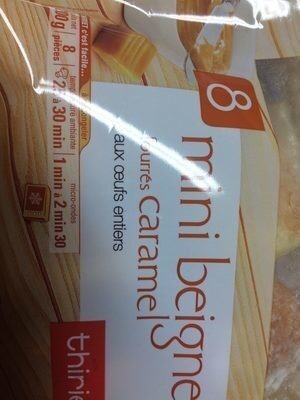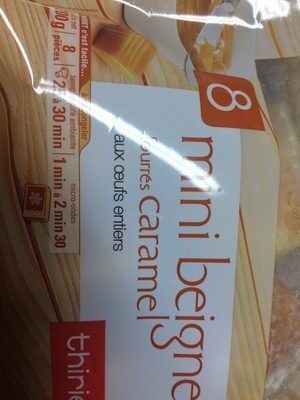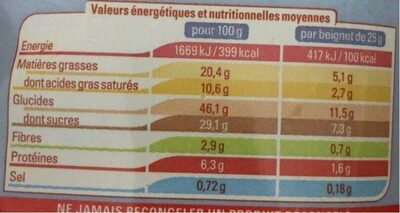Mini Beignets caramel - Thiriet - 200 g
This product page is not complete. You can help to complete it by editing it and adding more data from the photos we have, or by taking more photos using the app for Android or iPhone/iPad. Thank you!
×
Barcode: 3292590897543 (EAN / EAN-13)
Quantity: 200 g
Packaging: Plastic, Bag, Frozen
Brands: Thiriet
Categories: Snacks, Sweet snacks, Frozen foods, Biscuits and cakes, Cakes, Frozen cakes and pastries, Sweet Fritters, fr:Beignets, fr:Beignets fourrés
Link to the product page on the official site of the producer: https://www.thiriet.com/produits/pains_v...
Stores: Thiriet
Countries where sold: France
Matching with your preferences
Environment
Packaging
Transportation
Threatened species
Report a problem
Data sources
Product added on by kiliweb
Last edit of product page on by packbot.
Product page also edited by autorotate-bot, beniben, desan, openfoodfacts-contributors, yuka.JLRBOu6XFeUtMfHb_J4I9yfjBd7YOd9-J2Irog, yuka.WjdzWkdya1RodWRXcXYwSDR4UDY2L1plNFpPMWJWdm5EK3hBSVE9PQ, yuka.sY2b0xO6T85zoF3NwEKvlk5bduXGpwzCLS7tlELa4OWgdoXEQu1w-9b3bas, yuka.sY2b0xO6T85zoF3NwEKvllxrcIvngmjiHUPixVCw-diSJ4zwefMt8rfiH6o.










